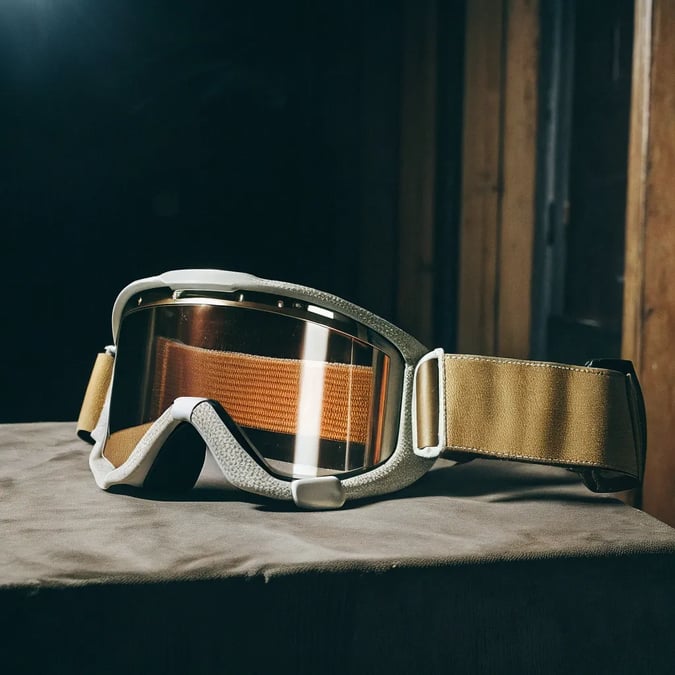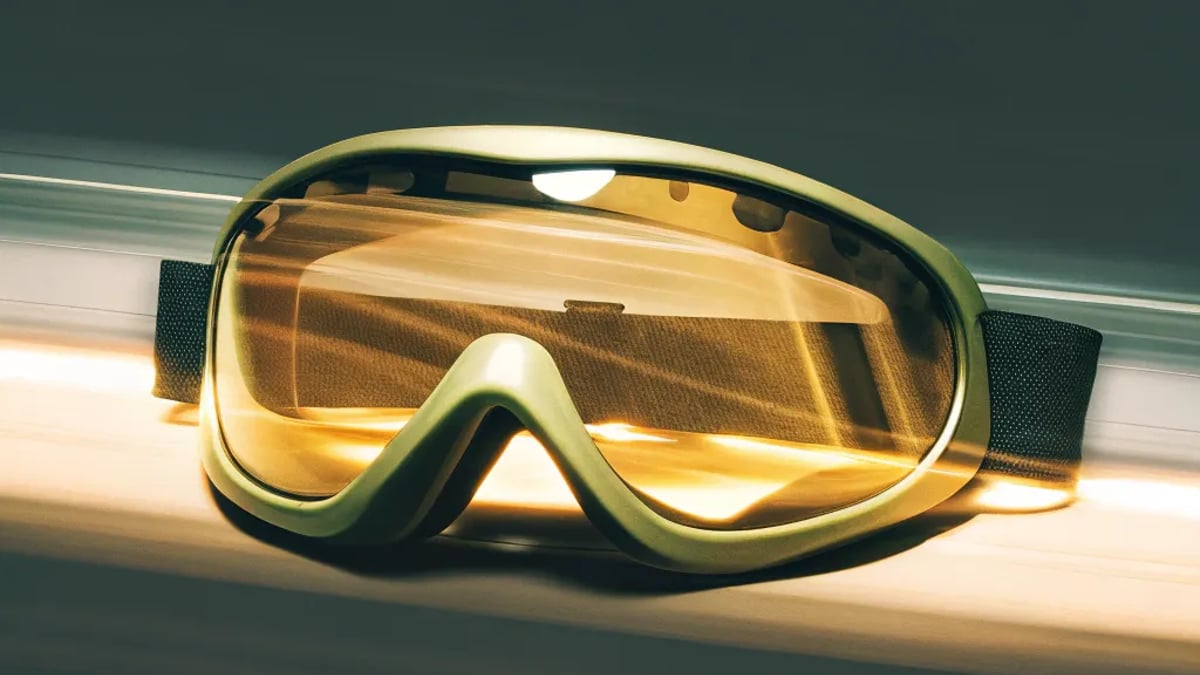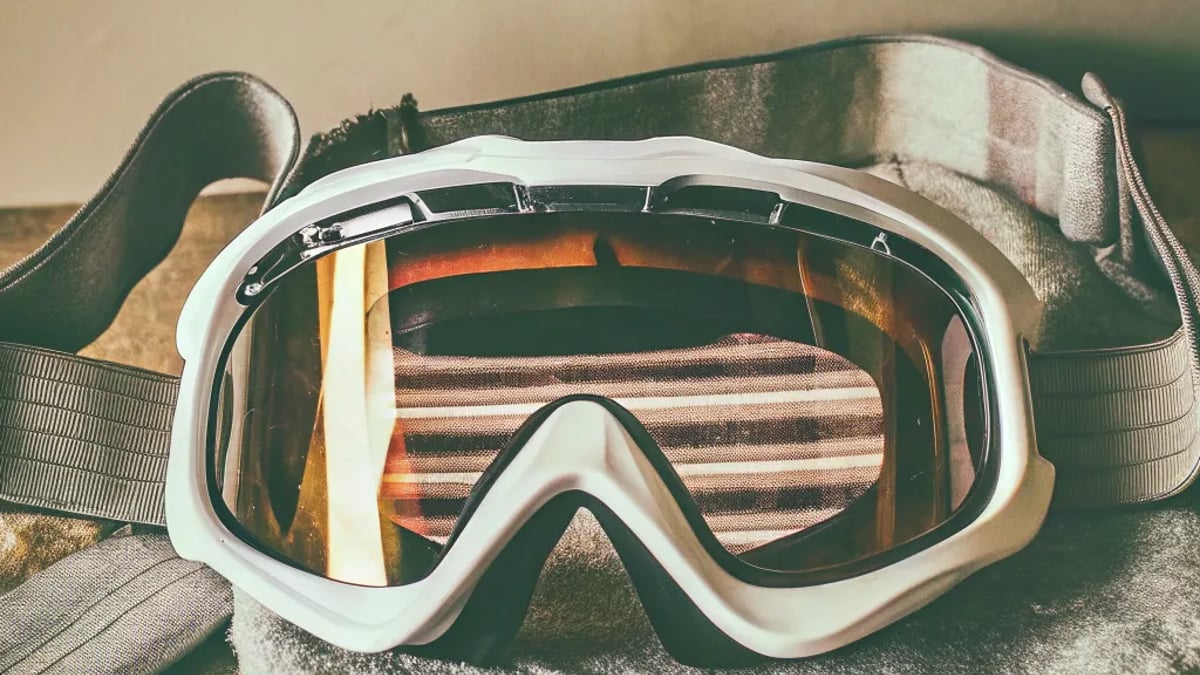
Finding the perfect pair of ski goggles can make or break your experience on the mountain. As someone who's faced both the frustration of fogged lenses on powder days and the pain of inadequate sun protection during spring skiing, I understand the importance of quality eyewear. The 2025 lineup of ski goggles offers impressive innovations in lens technology, frame design, and overall performance that can dramatically improve visibility across varying conditions.
How Lens Technology Has Evolved for 2025
The most significant advancement in this year's goggles is the sophisticated lens technology that adapts to changing light conditions. Gone are the days when skiers needed multiple lenses for different weather scenarios.
Contrast-Enhancing Technology
Modern ski goggles now incorporate contrast-enhancing filters that make terrain features pop even in flat light conditions. Smith's ChromaPop technology, featured in their 4D Mag model, separates color wavelengths that typically cause confusion to the eye, resulting in greater definition and clarity on the slopes.

"The difference between standard lenses and these new contrast-enhancing technologies is night and day," says Alex Ferreira, professional skier and equipment tester. "You can actually see the contours of the snow in conditions where everything used to look flat white."
Several manufacturers have developed their own proprietary versions:
- Oakley's Prizm technology
- Giro's VIVID lens technology
- Anon's Perceive lens system
Each aims to enhance specific color wavelengths relevant to snow conditions, making subtle terrain changes more visible at high speeds.
Photochromic Advancements
The latest photochromic lenses adapt faster than previous generations. Glade Optics has introduced what they call "Rapid Response" photochromic technology in their Challenger model, which adjusts to light changes in under 10 seconds—approximately three times faster than previous versions.

These adaptive lenses now work effectively in extremely cold temperatures, addressing a common complaint from previous years when photochromic technology would slow down significantly in sub-zero conditions.
Top Performers for All-Around Visibility
After reviewing extensive test results from Outdoor Gear Lab, Switchback Travel, and Powder Magazine, plus real user feedback from Reddit's r/Skigear community, several models consistently outperformed the competition.
Smith 4D Mag – Best Overall Visibility
Smith's 4D Mag continues to dominate the premium segment with its curved lens bottom that extends below the frame, increasing downward visibility by approximately 25%. This feature proves particularly valuable when navigating moguls or technical terrain where seeing what's immediately below you becomes crucial.
The magnetic lens interchange system allows for quick adaptations when conditions change suddenly—a common occurrence in mountain environments. Testers consistently rated these goggles highest for visibility in varied conditions, from bright sunshine to heavy snowfall.
The BirdsEye Vision technology (Smith's name for the curved lower lens portion) eliminates the frame obstruction that typically blocks your view of what's directly in front of your boots. While expensive (retailing around $320), many skiers find the investment worthwhile for the unmatched field of vision.
Oakley Flight Deck Prizm – Best for Bright Conditions
Oakley's Flight Deck series has incorporated their latest Prizm Snow technology for 2025, offering perhaps the best bright-light performance of any goggle tested. The rimless design provides exceptional peripheral vision while the large spherical lens maximizes your field of view.
What sets the Flight Deck apart is the specific tuning of their Prizm Snow lenses, which filter light in ways that make snow texture extremely visible even in the harshest midday sun. The Torch Prizm lens (with 17% light transmission) received particularly high marks from testers in intense sunlight conditions.
One tester from Powder Magazine noted, "The definition I could see in the snow at noon on a bluebird day was remarkable—I could spot every little bump and groove without squinting."
For skiers who frequently encounter bright alpine conditions, these goggles provide exceptional clarity without the eye fatigue that often comes with extended exposure to snow glare.
Anon M4 MFI – Most Versatile System
The Anon M4 MFI (Magnetic Face Integration) represents perhaps the most complete system for varying conditions. The goggles feature Anon's Perceive lens technology along with a magnetic interchange system that many testers found to be the easiest to use even with gloves on.
What truly distinguishes this model is the integrated magnetic connection for face masks, creating a seamless seal that prevents fogging—a common issue when using separate masks and goggles. This integration becomes particularly valuable during cold storms or pandemic-related face covering requirements.
The M4 comes with two lenses standard (typically one for low light and one for bright conditions), making it a complete package despite its premium price point of around $300.
Budget-Friendly Options With Excellent Visibility
Not everyone can justify spending $300+ on ski goggles, but fortunately, several mid-range options offer excellent visibility without breaking the bank.
Glade Challenger – Best Value Photochromic
At approximately $155, the Glade Challenger offers photochromic technology at nearly half the price of premium options. The lens adjusts from 30% VLT (visible light transmission) in low light to 15% in bright conditions, making it versatile enough for most skiing scenarios.
While it doesn't offer quite the same optical clarity as Smith or Oakley's premium lenses, most recreational skiers would be hard-pressed to notice the difference. The Challenger's anti-fog coating performed surprisingly well in tests, maintaining clear vision even during high-exertion runs.
"For the average skier who hits the slopes 5-10 days a year, these provide 90% of the performance of goggles costing twice as much," noted one Switchback Travel tester.
Dragon PXV – Best Mid-Range Peripheral Vision
Dragon's PXV model offers one of the widest fields of view in the mid-price range (approximately $200). Their Panotech lens design extends peripheral vision beyond many competitors, while the Lumalens technology enhances contrast in varying light conditions.
The frameless design minimizes obstruction, and testers particularly noted the excellent side visibility—helpful when skiing in crowded resorts where awareness of other skiers approaching from the sides is crucial for safety.
What About Fogging? Anti-Fog Technologies Compared
Fogging remains the number one complaint among ski goggle users, regardless of price point. The 2025 models have implemented several approaches to combat this persistent issue.
Ventilation Systems
Smith's 4D Mag and Giro's Contour both feature advanced ventilation systems that create airflow paths designed to evacuate moisture before it can condense on lens surfaces. Smith's AirEvac system integrates with their helmets to channel warm air away from the goggle interior.
Coating Technologies
All premium goggles now feature anti-fog coatings, but their effectiveness varies considerably. In controlled testing by Outdoor Gear Lab, Oakley's anti-fog coating lasted longest before degrading, maintaining effectiveness through approximately 25 days of heavy use before showing signs of diminished performance.
The key to preserving these coatings is proper care—never wipe the inside of goggle lenses with anything but the provided microfiber cloth, and allow goggles to dry completely between uses.
Dual-Lens Construction
Every top-performing goggle now features dual-lens construction, creating a thermal barrier that reduces temperature differential—the primary cause of fogging. The gap between lenses acts as insulation, keeping the inner lens closer to face temperature while the outer lens adapts to ambient conditions.
How to Choose the Right Lens Color for Different Conditions
One question that frequently appears in forums and discussions is about lens color selection. While photochromic lenses aim to address this issue automatically, many skiers still prefer dedicated lenses for specific conditions.
Low Light and Stormy Conditions
For overcast, snowy days or late afternoon shadows, lenses with higher VLT (Visible Light Transmission) percentages and rose, amber, or yellow tints perform best. These enhance contrast and help define terrain features when natural light is flat.
Recommended options:
- Rose/pink lenses (VLT 25-35%)
- Yellow lenses (VLT 60-80%)
- Amber/copper lenses (VLT 25-50%)
Bright and Sunny Conditions
For bluebird days with intense sun, darker lenses with lower VLT percentages reduce glare and prevent eye fatigue.
Recommended options:
- Dark grey lenses (VLT 5-15%)
- Black iridium/mirrored lenses (VLT 5-10%)
- Green mirrored lenses (VLT 10-15%)
Variable or Mixed Conditions
When facing changing weather, photochromic lenses or medium-tint options provide the best compromise.
Recommended options:
- Photochromic lenses (VLT range typically 15-30%)
- Bronze/copper lenses (VLT 15-25%)
- Light blue mirrored lenses (VLT 15-25%)

How Do Prescription Options Stack Up?
Skiers who require prescription eyewear have better options than ever in 2025, with several manufacturers offering either built-in prescription solutions or OTG (Over The Glasses) designs.
Dedicated Prescription Inserts
Smith, Oakley, and several other manufacturers offer prescription inserts that clip into their standard goggle models. Smith's RX insert for the 4D Mag received particularly good reviews for maintaining the goggle's full field of view while accommodating prescriptions.
These inserts typically cost $150-$300 in addition to the goggle price, depending on prescription complexity, but offer superior optical quality compared to wearing glasses underneath goggles.
OTG (Over The Glasses) Models
For occasional skiers who don't want to invest in prescription inserts, OTG designs have improved significantly. Giro's Contact offers extra facial volume and notches in the foam for eyeglass temples. Testers noted these accommodated medium-sized frames without pressure points, though extremely large glasses may still cause issues.
What About Fit With Helmets?
The integration between goggles and helmets has become increasingly important as helmet use approaches 100% among resort skiers. Most manufacturers now design their goggles and helmets as systems.
Brand Matching Advantages
Sticking with the same brand for both helmet and goggles typically ensures the best integration. Smith goggles, for example, are designed to align perfectly with Smith helmets, eliminating the dreaded "gaper gap" (the exposed forehead between goggle and helmet) while maximizing ventilation compatibility.
Universal Compatibility Features
For those mixing brands, look for goggles with:
- Adjustable outriggers on the strap attachment points
- Flexible frames that adapt to different helmet shapes
- Silicone strips on straps to prevent slipping
The Oakley Flight Deck and Anon M4 received high marks for compatibility with various helmet brands beyond their own product families.
Are Smart Goggles Worth It?
The 2025 season has seen several "smart goggle" options enter the market, featuring heads-up displays, camera integration, or connectivity features. While intriguing, the technology remains in its early stages.
Current Limitations
Smart features add significant weight and cost while typically reducing optical quality compared to dedicated non-smart goggles. Battery life in cold conditions remains problematic, with most smart systems lasting only 4-6 hours in temperatures below freezing.
"The technology is promising but not quite there yet for serious skiers," notes one Outdoor Gear Lab tester. "The display information is helpful, but the compromises in field of view and weight aren't worth it for most users."
For those interested despite the limitations, the Smith I/O MAG Imprint offers the most refined experience, with a subtle heads-up display showing speed, vertical drop, and navigation without significantly obstructing vision.
The Verdict: Which Goggles Provide the Best Visibility Across All Conditions?
After analyzing test data, user reviews, and expert opinions, clear patterns emerge about which goggles offer the best overall visibility in varying conditions.
Premium Pick: Smith 4D Mag
The Smith 4D Mag remains the gold standard for all-condition visibility, offering:
- Exceptional optical clarity with ChromaPop technology
- Unmatched downward visibility with the curved lens extension
- Excellent anti-fog performance
- Easy lens interchange for condition changes
- Superior integration with Smith helmets
For skiers who spend many days on the mountain and want the absolute best visibility regardless of conditions, the investment in the 4D Mag pays dividends in performance and comfort.
Best Value: Glade Challenger
For those seeking excellent performance at a more reasonable price point, the Glade Challenger offers:
- Effective photochromic technology
- Good optical clarity
- Reliable anti-fog performance
- Comfortable fit compatible with most helmets
At roughly half the price of premium options, the Challenger provides most of the visibility benefits without the premium price tag.
Best for Varying Conditions: Anon M4 MFI
For skiers regularly facing dramatically changing weather, the Anon M4 MFI system offers:
- The easiest lens change system
- Integrated face mask connection
- Two included lenses covering most conditions
- Excellent peripheral vision
The complete system approach makes this the most versatile option for skiers facing unpredictable mountain weather.
How To Care For Your Investment
Regardless of which goggles you choose, proper care will extend their lifespan and maintain optical performance. Always:
- Allow goggles to dry completely after use before storing
- Never wipe the inside lens surface when wet (let it air dry instead)
- Use only the provided microfiber cloth for cleaning
- Store in a protective case, not crushed in a pocket
- Avoid touching the inside lens surface with fingers
- Never set goggles lens-down on any surface
Following these simple care instructions can double or triple the effective lifespan of even modestly priced goggles.
The right pair of ski goggles enhances not just visibility but overall safety and enjoyment on the mountain. With the 2025 lineup offering better performance than ever across all price points, there's never been a better time to upgrade your eye protection for the slopes.
Whether you're carving groomers under bright sun, exploring powder stashes in flat light, or braving stormy conditions for fresh tracks, today's advanced goggle technology ensures you'll see clearly in whatever conditions the mountain throws your way.
Tags

About Eliza Hartwell the Author
Eliza Hartwell is a seasoned travel gear expert with over a decade of experience in curating and reviewing the latest in travel essentials. Her passion for discovering innovative, sustainable travel gear has made her a trusted voice among globe-trotters seeking reliability and comfort on their adventures.
Recommended Articles
This Everyday Hobby May Slow Memory Loss According to Studies
Discover how engaging in hobbies can delay memory loss and enhance cognitive health as we age, supported by scientific studies.
The 2025 Ford Transit Versatility Meets Everyday Function
Discover the 2025 Ford Transit, a versatile and functional vehicle perfect for work, transport, and eco-friendly options. Explore its features now!
House Smell Off? These 27 Cleaning Hacks Actually Work
Discover 27 effective cleaning hacks to remove unpleasant smells from your home and maintain a fresh, welcoming environment for guests.
15 Pet Habits That Quietly Eliminate Household Odors
Discover 15 effective pet habits to keep your home odor-free. Simple techniques can make a big difference in maintaining a fresh environment.
Why So Many Retirees Are Ditching Canes for This Folding Device
Discover why retirees are choosing folding canes over traditional ones for better mobility, convenience, and independence.




